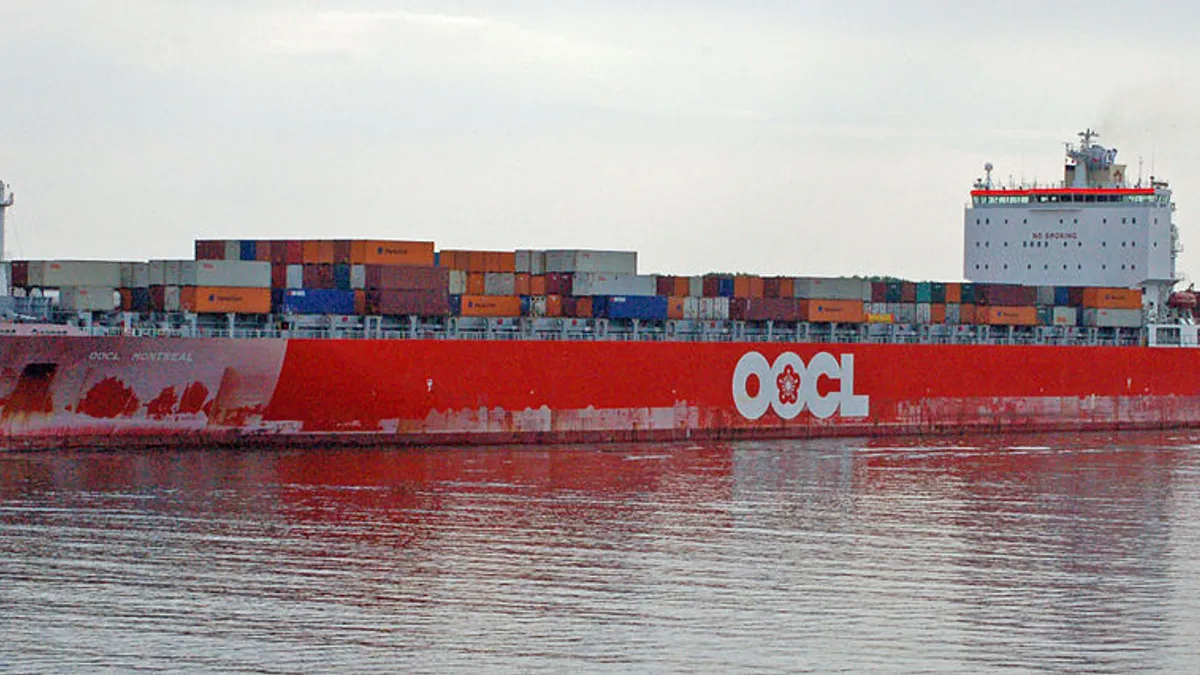Dive Brief:
- Maritime analysis firm SeaIntel named OOCL, Evergreen and Wan Hai as the three most reliable shipping lines, The Loadstar reports. OOCL's was 83.3% reliable in its schedule across all trades, while Evergreen and Wan Hai tied at 82.5%.
- Meanwhile, Yang Ming performed poorly, at just a 72.9% on-time arrival rate, below Singapore-based PIL at 73% and UASC at 73.1%.
- There was no improvement on 2016's reliability levels. The greatest decreases were seen at MOL, UASC and K Line, with drops of 15.1%, 14.4%, and 13.8%, respectively, according to SeaIntel data.
Dive Insight:
If shippers want transparency, chances are they'll want reliability as well.
Port delays, the launch of new alliances and overcapacity-fueled market instability have recently raised questions on carriers' stability. As a result, shippers are increasingly looking to measure their shipping lines' reliability, including both financial measures — such as Z-score requests — and logistics performance.
SeaIntel's stability ranking is one way to evaluate carriers' logistics score, but this year's results could carry more weight than in previous years. After all, shippers have been clamoring for more information to help mitigate the effect of decreasing lead times due to rising consumer demands.
Yet, the results are not surprising, Jon Slangerup, Chairman and CEO of American Global Logistics told Supply Chain Dive. “It’s not surprising that OOCL has come out again on top of the reliability charts as the company has long been recognized as one of the industry’s best-managed ocean carriers," he said.
Slangerup attributes OOCL's dominance to a variety of details. "OOCL’s performance, in my view, is directly tied to their major investment in IT infrastructure and software development, with their IRIS operating platform providing a high degree of visibility into the handling, movement and disposition of ocean freight moving through their system," he explained. "They are one of a handful of ocean carriers, including Maersk Line, that have demonstrated how state-of-the-art information and automation technology drives cost efficiency and service reliability improvements on a continuous basis."
Summing up the benefits of data and automation, he added, "This further reinforces the demonstrated benefits of ongoing investment and development of information technology solutions capable of providing end-to-end visibility and optimization of the world’s complex supply chains.”













